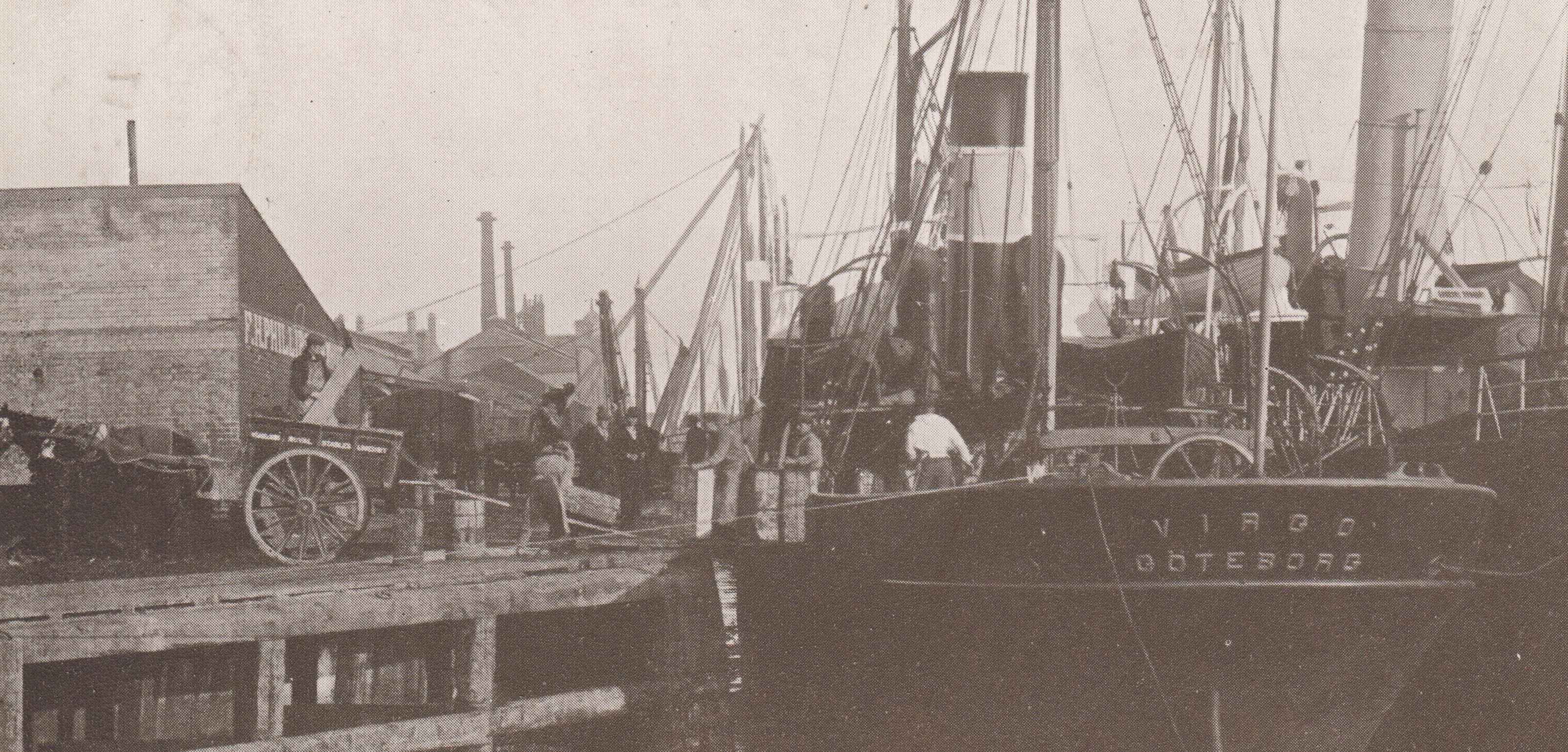Drift net mending

The Drift Nets Mending Trade Board (Great Britain) was established in 1925 and focused on fishing communities in Norfolk and Suffolk, particularly in the areas around Great Yarmouth and Lowestoft.
The series of trade board papers in the Trades Union Congress archive includes two files of documentsLink opens in a new window relating to the Drift Nets Mending Trade Board. As part of the Modern Records Centre's 'Sweated trades' digitisation project, we have made a selection of these documents available online, including the items highlighted below. The sources can also be browsed through our digital collectionLink opens in a new window.
Illustration: Lowestoft docks, early 20th century - photograph from private collection reproduced with permission.
Scope of the Trade Board:
It includes information about arrangements for net mending in Lowestoft, Great Yarmouth and some areas of Scotland.
Wages and working conditions:
Application for increase in wages for Great Yarmouth beatsters, 1925Link opens in a new window
Copy of letter sent by Florence Saward and V. Smith of the Workers' Union to the Great Yarmouth Boat Owners Association. It includes proposed wage rates for women and girls of different ages and demands for "an annual weeks' holiday ... with full pay".
Circular about confirmation of proposed minimum rates of wages, June 1926Link opens in a new window
The Office of Trade Boards circular includes comments on the "relationship between work in the beating lofts and work performed by home workers in their own homes".
Minimum rates for women workers, October 1926Link opens in a new window
Order of the Minister of Labour.
Report of an enquiry into the mending of drift nets by homeworkers, 1926Link opens in a new window
The enquiry was limited to the Lowestoft and Great Yarmouth areas and was intended to find out about the condition of drift nets given to home workers to mend, the rates paid and the yield of proposed Trade Board piece rates. A separate appendix to the reportLink opens in a new window provides information about the performance of individual (unnamed) workers.
Office of Trade Boards circular.
Objections:
Each change to the recommended minimum wage was publicised by the issuing of printed notices by the Trade Board. Individuals and organisations then had a set period of time during which they could submit formal written objections to the proposed changes. Inevitably, when wage rates increased most objections were sent in by employers; when rates were reduced most objections were sent by trade unions or workers.
Grounds of objection: The Association of British Fisheries, 1924Link opens in a new window
Objections to drift net mending being included in the Trade Board system.
98 objections: full letters and summaries, 1926Link opens in a new window
The objections were made against the proposed minimum rate of wages and to the application of the rate to drift nets mending. The vast majority were from individual boat owners in Great Yarmouth and Lowestoft.
Workers' side meetings:
Minutes of meetings of the Drift Net Mending Trade Board, Workers' SideLink opens in a new window
The brief minutes include some information about negotiations with employers and attempts to enforce the rates.
